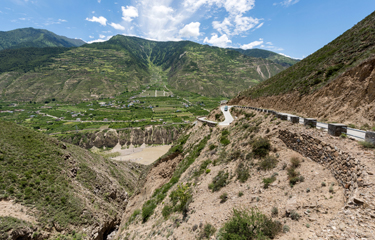It is difficult to keep up with the pace and the scale of the Belt and Road Initiative (BRI), China’s foreign policy blueprint of integrating regional and Middle Eastern countries into its economy through new infrastructure.
Originally known as “One Belt, One Road,” China has steadily refined its plans since they were announced, and now the Council on Foreign Relations has described it as “the most ambitious infrastructure investment effort in history." There’s no doubt it is changing trade flows for commodities of all types, including seafood.
The potential of the BRI is obvious, but the feasibility of some of its planned infrastructure is questionable. Thanks to the BRI, lots of projects are getting the go-ahead which otherwise couldn’t – or perhaps shouldn’t – due to doubts regarding their long-term viability. Local governments across China have been positioning huge distant-water fishery port processing and trading hubs as BRI initiatives, at the same time China’s central government is seeking a deal through the World Trade Organization to reduce global fuel subsidies, which keep so many of its distant-water vessels at sea. The government has also ramped up enforcement of more stringent restrictions on aquaculture and commercial fishing domestically, hurting its seafood output and giving doubt to its future as a major seafood exporter.
A lack of thoughtfulness or cautiousness in infrastructure investments extends beyond China’s local governments, up to its national politburo. One of most potent linkages called for in the BRI is a proposal to connect India with China through a high-altitude railway that will run through Nepal and Tibet and into the Chinese railway system. According to the proposal, 98 percent of the track will be built via tunnels and elevated track burrowed into the Himalayas, at a cost which the host country, Nepal, which will be partly expected to bear, most likely by taking on Chinese loans.
For China, the railway would open up new supply lines and markets. With few commodities to export, Nepal’s trade deficit with China ran to USD 12 billion (EUR 10.7 billion) in 2018, one-third of the country’s GDP. However, China’s central government may be reaching too far in expecting a very poor country like Nepal to bear the debt required to make the project a reality.
Nevertheless, plenty of developing nations still want to sign up to the BRI because China’s is increasingly shifting to a consumer economy, and the potential of its import market is enormous. The hope of accessing the China market is the reason why 1,000 African officials and executives were in Changsha, Hunan Province recently to attend the Forum on China-Africa Cooperation, coordinated by the Chinese government to engage African leaders. China’s meat imports in May were up 45 percent year-over-year and its grain imports were also up markedly in 2018, a trend China’s neighbors like Kazakhstan hope to take advantage of through the BRI. Further west, Iranian aquaculture backers have been keen to get Chinese investment for shrimp farms that will be in easy reach of the Chinese-built port of Gwadar, in Pakistan – the starting out point for the overland China-Pakistan Economic Corridor.
Recently, Iran’s quest for greater trading options led several of the country’s diplomats to meet Chinese President Xi Jingping during his trip in central Asia for the annual meeting of the Shanghai Cooperation Organization, a body set up nearly two decades ago by China to improve engagement with Central Asian states. Russia is also a member of the body, which has ambitions to turn the often-feuding former Soviet states into a European Union-style collective connected to China by Chinese-built infrastructure.
China’s major competitor in Asia, Japan, has taken steps to counter the influence of the BRI in the region. In fact, Japan has outspent China in infrastructure activity in the major Southeast Asian nations, with USD 367 billion (EUR 328.2 billion) worth of projects underway in six ASEAN countries, compared to China’s USD 255 billion (EUR 228.1 billion). But the recent pullback of global investment by China’s primary rival, the United States, under the “America First” policy of presidency of Donald Trump, has been working in China’s favor by driving many smaller economies – from Somalia to Papua New Guinea, from Gambia to Fiji – towards China.
The BRI is clearly having an impact in far-flung but strategic locations around the globe. Clearly, it gives China lots of new options in buying and selling products. It’s still difficult to conclude just how feasible many of its ambitions are, but by creating new markets and supply lines for Chinese trade, the Belt and Road Initiative has the capacity to upend the global status quo and reduce China’s reliance on its traditional trading partners. It also buys Beijing diplomatic clout to achieve China’s agenda and further its quest to establish a “new type of international relations” – a reference to the creation of a new global order not built around rules were written by Western powers, ostensibly for their own advantage.
Photo courtesy of B.Zhou/Shutterstock







